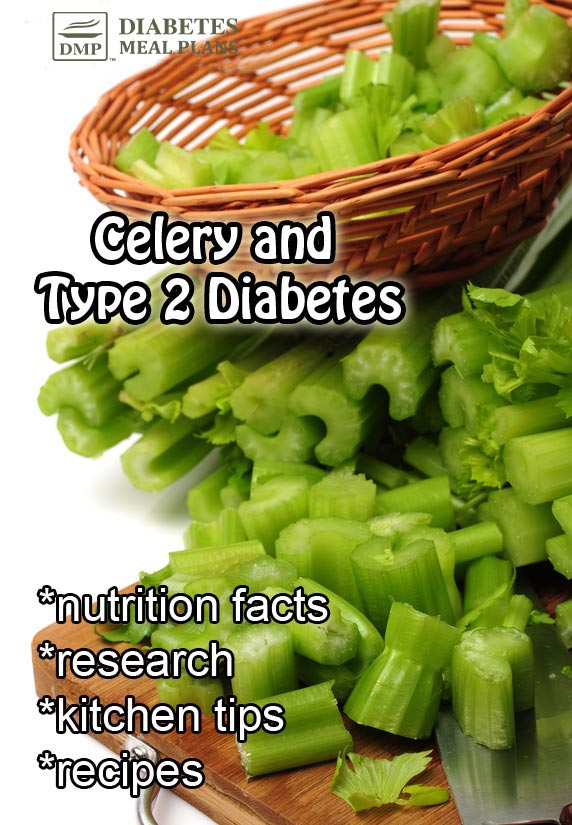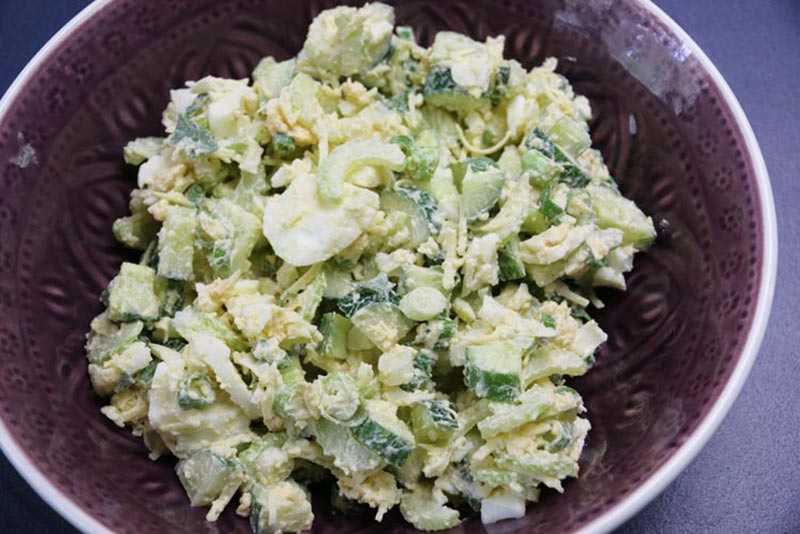Table of Contents[Hide][Show]
Celery’s claim to fame as a low-calorie diet food just barely scratches the surface when you consider its multitude of health benefits and the wide variety of options for incorporating into meals, snacks or even beverages!

If you’re not using it in your diet already, you will be by the time you finish reading this…
Celery Nutrition Facts
- Celery is very low in calories at only 16 per 1 cup raw (diced) per 100 grams
- Celery is an excellent source of vitamin K
- Celery is chock full of antioxidants and anti-inflammatory components
- Celery provides a decent amount of other vitamins and minerals including: potassium, vitamin C, folate and vitamin B6
- Celery is a source of dietary fiber providing 1.5 grams per cup
- Celery is considered a very low glycemic index food
Health Benefits of Celery
- Vitamin K is crucial for blood clotting, building strong bones, and preventing heart disease
- Potassium is also key to healthy heart functioning and helps reduce blood pressure
- Vitamin C boosts immunity and supports collagen for healthy skin
- Vitamin B6 is a coenzyme needed for 100 enzyme reactions, including protein metabolism
- The high water, high fiber content of celery make it an excellent ‘cleansing’ type food acting as a diuretic and helping increase stool transit
Research on Celery Specific to T2 Diabetes
Celery seed has been shown to improve hyperglycemia and hyperlipidemia in diabetes.
Celery’s antioxidants and other nutrients help to reduce inflammation (a leading cause of chronic disease including type 2 diabetes). Apigenin found in celery has been identified as a component effective at reducing inflammation as well as stimulating brain health.
Furthermore, celery has been shown to be helpful in lowering cholesterol, lowering blood pressure, boosting liver health, and protecting against ulcers.
Celery contains antimicrobial factors that help fight infections (which are much more common in diabetes)
Celery also contains flavonoids that have been shown to help prevent cancer.
WOW! That’s a ton of health benefits in a stalk!

Points for Consideration
Celery allergies are rare, but do exist and can be severe, so obviously if you are allergic or developing food allergy symptoms when eating celery, avoid it completely as it can cause fatal anaphylactic shock.
Be aware that celery is on the Environmental Working Group’s list of the “Dirty Dozen” meaning it is in the top 12 foods (in fact, number 5) containing pesticide residues. For this reason, it may be one of the veggies you choose to buy organic.
Because celery is high in fiber and can act as a diuretic, it could exacerbate diarrhea in those who have trouble in this area, so take it slow.
Interestingly, celery is a bit high in sodium compared with other vegetables, at 80 mg per serving. This is natural sodium, which is to be differentiated from sodium chloride (table salt) and is well balanced with other minerals such as potassium so will not have a negative effect on blood pressure. However, if you are monitoring your sodium intake, it’s worth noting.
Celery and Diabetes Conclusion
Free of fat and high in fiber and water, celery is a very low calorie filling food… in fact so low in calories, it has been termed a ‘negative calorie’ food, in that the digestion it takes to eat it is greater than the calories it provides.
This is likely untrue and you’re certainly not going to lose weight by eating celery; however, you may lose weight by substituting it in for a higher calorie food you’re currently eating (like crackers!).
Celery is considered one of our 20 all-you-can-eat vegetables!
Celery in the Kitchen
Selection
Look for stalks that are firm and crisp with consistent color and green (not yellow, brown or faded) leaves. Chose stalks that are tight and not frayed out.
Storage
Store celery in the crisper in the refrigerator and do not wash until ready to use. If you wrap it in paper towel, it will last up to two weeks, even three in some cases. Even if it’s a bit limp you can still chop it up and use it in stews and soups.
Uses
Celery can be eaten raw with veggie dip or nut butters (tip: replace the raisins on classic ‘ants on a log’ with blueberries), stir-fried, added to soups, casseroles or stews, blended into smoothies, or tossed into salads.
It adds a very nice crunch to tuna, chicken, egg or salmon salads.
Most people just eat the stalks, but the leaves are perfectly fine to eat as well–toss them into soup stocks or stir-fries.
Cooking
Celery is often eaten raw rather than cooked. However it can be:
- Steamed 10-15 minutes (much less nutrient loss than boiling)
- Sauteed lightly in olive oil or butter 5 minutes
- Tossed into soups in the last 10 minutes of cooking (or if you prefer it to be soft, add it into the soup earlier.
- Stewed as a vegetable in any dish or slow cooker meal, celery works well
Cutting Techniques
First cut off the base of the celery stalk and pull or cut off the leaves, then chop the stalk into smaller individual stalks (for snacking on raw) or smaller slices (if adding as a cooked ingredient to main dishes).
When adding to a salad you can slice really thin to add a super crunch without having the overpowering celery taste.
Here’s a video to show you how to chop celery in a number of ways – some fancy ones even.
Celery Recipes
Hummus, Ranch or Baba Ghanoush and Celery Sticks

Click here for the Hummus and Celery Sticks recipe
Other dippers include Baba Ghanoush or Yogurt Ranch Dip
Egg and Cheese Cucumber Salad

Click here for the Egg and Cheese Cucumber Salad recipe
Chicken Chorizo Gumbo
Celery makes a great addition to soups and stews.

Click here for the Chicken Chorizo Gumbo recipe

Leave a Reply